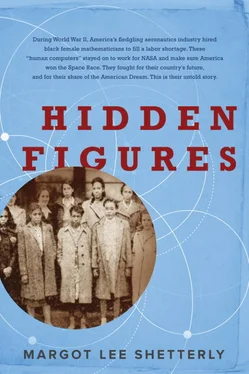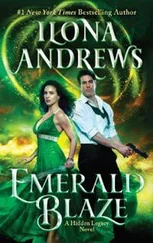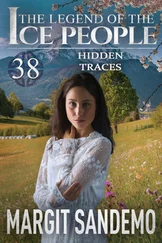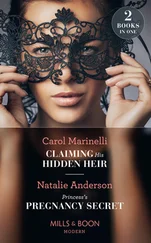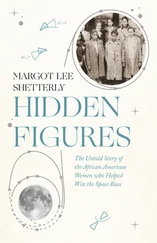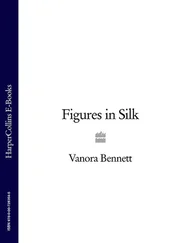You are hereby appointed Mathematician, Grade P-1, with pay at the rate of $2,000 per annum, for such period of time as your service may be required, but not to extend beyond the duration of the present war and for six months thereafter.
The pay was more than twice the $850 annual salary she earned teaching at Moton.
Dorothy’s farewell was as straightforward and unadorned as the letter that had arrived from the NACA that fall. No party or fanfare marked her departure, just a single line in the Farmville section of the Norfolk Journal and Guide : “Mrs. D. J. Vaughan, instructor in mathematics at the high school for several years, has accepted a position at Langley Field, VA.” Never one for the long good-bye, she lingered over her children in the house on South Main only until the bell rang at the front door. “I’ll be back for Christmas,” Dorothy said, with a final round of embraces. For twelve school years, every morning, she had turned left out the front door to get to work. Now the taxi turned right, spiriting her off in the opposite direction.
The Colored waiting room at the Greyhound bus station served as the checkpoint for an in-between world. Dorothy boarded the bus, and with each passing mile, life in Farmville faded into the distance. The job at Langley, an abstraction for half a year, moved into focus. Dorothy’s previous travels—Missouri to West Virginia, Ohio to Illinois, North Carolina to Virginia—dwarfed the mere 137 miles that separated Farmville from Newport News, where she had managed to secure temporary housing using a list of rooms for rent for colored tenants. Surely she had never traveled a greater emotional distance. In the transitional space of the bus, she turned over the questions that had loitered in her mind since sending off her application six months prior. What would it be like to work with white people? Would she sit side by side with young women like the ones at the State Teachers College? Would she miss the rolling blue hills of Virginia’s Piedmont, or fall in love with the great expanse of the Chesapeake Bay and the many rivers, inlets, and wetlands that embroidered the Virginia coast? How would she endure the time and distance that separated her from her children, the warmth of their embraces still fresh on her skin as the bus gained the road south?
Surrounded by grandparents and dozens of aunts and uncles and cousins, in a community where neighbors counted as family, pitching in when relatives couldn’t, Dorothy’s children’s lives would change very little. Accustomed to their mother’s long workdays and their father’s extended absences, they missed Dorothy, but her departure didn’t interrupt their high-spirited lives replete with family, friends, and school.
It would, however, complicate her marriage with Howard, in which time spent apart was already measured in weeks or months rather than days. Dorothy was twenty-two years old in 1932 when they married, and ready to assume the mantle of traditional family life. Dorothy, who grew up without grandparents, basked in the stability and warmth of the extended Vaughan family, but loving in-laws could provide only so much salve for a missing husband’s companionship. The geographic separation between wife and husband was a proxy for the emotional distance that opened between them as the years progressed, exposing an unevenness that was perhaps present from the beginning of their relationship.
When home from the hotel circuit, Howard’s longings were for the simplicities of small-town life: spending time with family and friends and working in the family’s poolroom. Dorothy, on the other hand, filled every spare hour of her week with activity, from NAACP meetings to piano rehearsals at the church. Howard was satisfied with his high school diploma, but years after she chose teaching over a master’s degree from Howard University, Dorothy had decided to travel to the Virginia State College for Negroes near Richmond, Virginia, once a week for a semester to take an evening extension course in education.
Dorothy, who knew the call of the open road so well, could certainly understand some of the appeal of Howard’s unusual and itinerant career, and she supported it as best she could. In 1942, the entire family accompanied him to White Sulphur Springs, West Virginia, renting a house in town that was close enough for Howard to walk to his job as a bellman at the Greenbrier. Warned by their parents not to even think about setting foot on the hotel grounds, the Vaughan children got as close as they could to the enormous white-columned resort from the periphery, peering through the shrubbery-covered iron fence from the outside so that they might steal a glance at the German and Japanese detainees interned at a makeshift prisoner-of-war camp on the premises.
Their rented house was across the street from the home of an older Negro couple, Joshua and Joylette Coleman. Joshua and Howard shared bellman duties at the front desk of the Greenbrier. While the men worked, Dorothy and the children passed the day with Joylette, a retired schoolteacher. The Vaughan children came to love the Colemans; it was like having another set of grandparents. Dorothy, who had spent seven years of her youth in West Virginia, told stories of living in the state and listened to the Colemans’ proud tales of their children’s exploits, particularly those of their youngest daughter, Katherine.
Charles, Margaret, Horace, and Katherine Coleman had grown up right there in town. Twenty-four-year-old Katherine lived in Marion, Virginia, a speck of a town in the state’s rural southwest. Until settling down and starting a family, Katherine had also worked as a math teacher. Like Dorothy, Katherine’s intellectual gifts particularly her talent for math had skipped her ahead in school. She graduated from high school at fourteen and enrolled at West Virginia State Institute, a black college located just outside of Charleston, the state capital. By her junior year, Katherine had tackled every math course in the school’s catalog and had been taken under the wing of a gifted young math professor named William Waldron Schieffelin Claytor, who created advanced math classes just for her. Claytor, who earned a PhD in math from the University of Pennsylvania in 1933, was only the third Negro in the country to obtain the credential. He had graduated from Howard University in 1929 and took a seat in the school’s inaugural one-year master’s degree program in mathematics—the same offer Dorothy had been unable to accept.
Whether or not Dorothy and Katherine ever realized that the brilliant Claytor was one of their shared connections—Dorothy almost never discussed her Howard admittance—Katherine’s path following her graduation from the college, with a summa cum laude degree in math and French, must have felt to Dorothy like an alternate version of her own story. In 1936, the NAACP Legal Defense Fund, led by Charles Hamilton Houston, successfully argued the Supreme Court case Murray v. Pearson , ending graduate school admission policies that explicitly barred black students. Building on that victory, the organization scored again at the high court with 1938’s Missouri ex rel. Gaines v. Canada , requiring states either to provide their black students with separate (but “equal”) graduate and professional school programs or to allow them to integrate the white schools. Some states, like Virginia, simply refused to comply: in 1936, a black student from Richmond named Alice Jackson Houston applied to the University of Virginia to study French, but she was denied admission. The NAACP sued on her behalf, and in response, the state of Virginia set up a tuition reimbursement fund, subsidizing the graduate educations of black students in any place but Virginia, a policy that continued until 1950.
Читать дальше
Конец ознакомительного отрывка
Купить книгу
